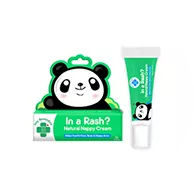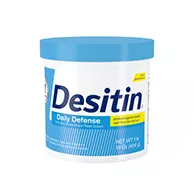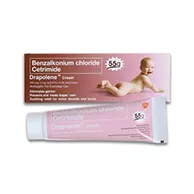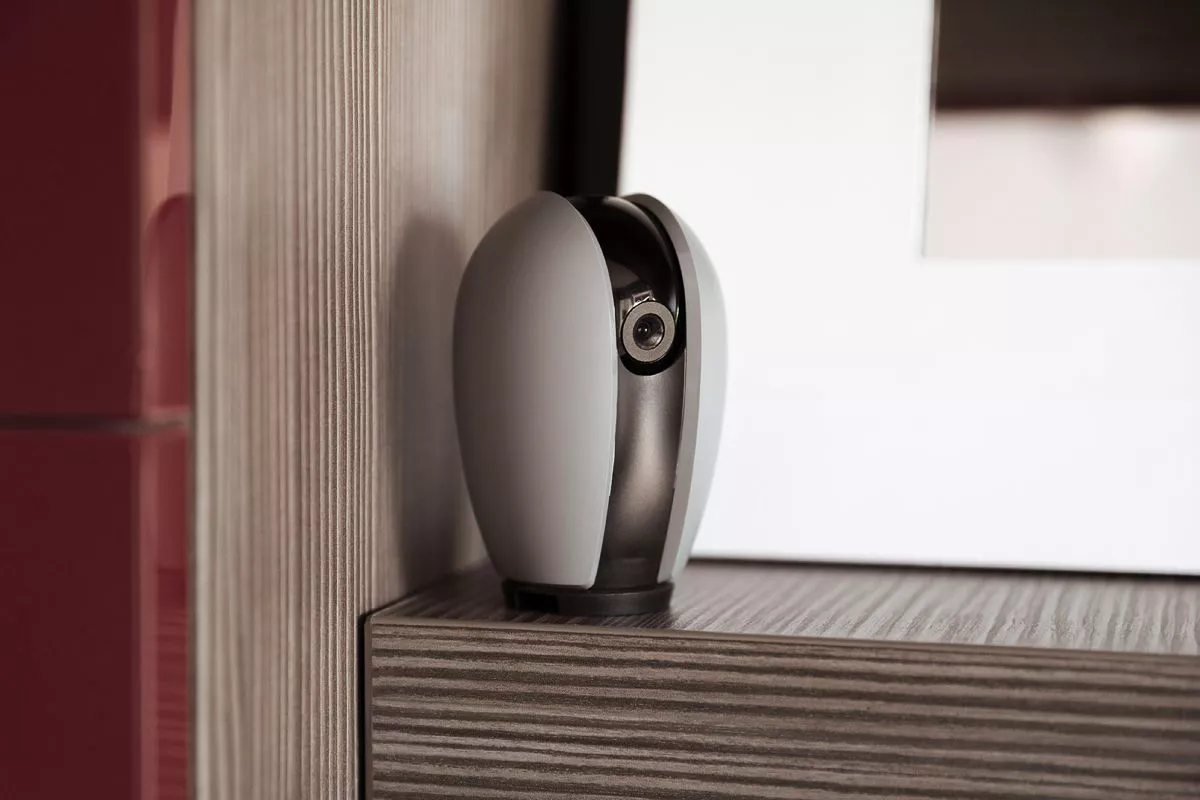Diaper rash is a common concern for parents with babies and toddlers. It brings discomfort and irritation to little ones, causing concern for parents. Luckily, there are various diaper rash creams available in the market that can provide relief and ease this problem. This is especially important in the Philippines, where the weather tends to be warm and humid. In this guide, we’ll look into the best diaper rash creams available in the Philippines. This will help you confidently choose the right cream to keep your child comfortable.
Celebrating the arrival of a new baby in your family is a wonderful moment, yet it also introduces fresh hurdles. Among these challenges is dealing with diaper rash. To assist you in sorting through the numerous choices, we’ve assembled a collection of the best diaper rash creams in the Philippines.
Table of Contents
ToggleUnderstanding Diaper Rash
Diaper rash is an uncomfortable and sometimes painful problem that affects babies and young kids. It can be caused by different things, but with the right knowledge and care, you can manage it well.
What Causes of Diaper Rash?
There are several reasons why diaper rash happens. These include wetness, rubbing, delicate skin, allergies, and even certain medical conditions. Knowing these reasons can help you prevent it and choose the right treatments.
Understanding Skin Sensitivity
Babies have delicate skin that’s easily irritated. Friction from baby diapers and being wet can damage their skin’s natural protection, making it red and sore.
Prolonged Exposure to Moisture
Leaving a wet or soiled diaper on for too long can create a moist environment that promotes the growth of bacteria and fungi. This can further irritate the skin and contribute to diaper rash.
Friction and Rubbing
When the diaper rubs against the baby’s skin a lot, it can cause redness and soreness, especially if the diaper is too tight or if the baby moves around a lot.
Allergic Reactions
Certain babies might be allergic to some diaper materials, detergents, or baby wipes. These allergic responses can manifest as rashes in the diaper area.
Bacterial and Fungal Infections
Bacteria and fungi love warm, wet spots. If the diaper area isn’t kept clean and dry, these tiny organisms can spread and make the rash even worse.
Symptoms of Diaper Rash
Redness and Inflammation
The most common sign of diaper rash is redness and swelling in the diaper area. The skin might look irritated and feel warm when touched.
Itching and Discomfort
Babies with diaper rash may become irritable and fussy due to the discomfort caused by itching and burning sensations.
Dry or Flaky Skin
In certain cases, the skin that’s affected might become dry, flakey, and even crack severely if the diaper rash is bad.
Bumps, Pimples, or Sores
Diaper rash can cause little bumps, pimples, or even open sores to appear. These can be painful and increase the risk of infection.
Severity Levels of Diaper Rash
Mild Diaper Rash
A mild diaper rash shows a little redness and irritation. Taking care of your baby’s diaper area and using protective creams can often help.
Moderate Diaper Rash
Moderate diaper rash is when the redness, swelling, and discomfort are more noticeable. You might need to use special creams in addition to regular diaper care.
Severe Diaper Rash
Severe diaper rash involves intense redness, inflammation, and even bleeding. If home treatments don’t work, it’s important to see a doctor.
Review of the Best Diaper Rash Creams in the Philippines
1. Aquaphor Baby Healing Ointment
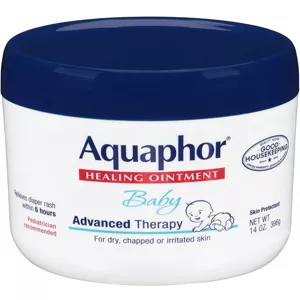
Best for Sensitive Skin
Aquaphor Baby Healing Ointment is a special ointment designed to gently care for your baby’s soft skin.
Pros:
- This ointment is proven by doctors to bring back smooth, healthy skin.
- You can use it for various baby skin issues, like dry cheeks, small cuts, scrapes, diaper rash, and more.
- It keeps your baby’s skin safe from getting dry
- It works quickly to soothe diaper rash discomfort
Cons:
- Bit greasy or sticky on the skin.
2. Aquaphor Diaper Rash Paste
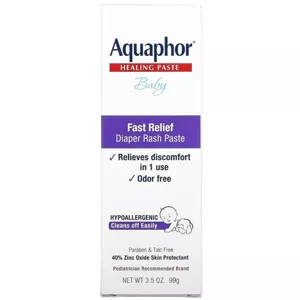
Aquaphor Diaper Rash Paste is a special cream made to take care of and stop diaper rash. It has a super-strong 40% Zinc Oxide to fix diaper rash and also natural Shea Butter to make the skin soft and comfy.
Pros:
- Gives quick help for diaper rash and when the skin gets red
- Useful for lots of skin problems, like dry cheeks, small cuts, scrapes, burns, and eczema
- You can find it easily because it’s available in many stores
- Proven effective, it can make diaper rash feel better in hours
- Safe for the skin and doesn’t have any smell
Cons:
- Greasy or oily on the skin
- Other creams may contain additional ingredients to help heal rashes
3. Bepanthen Baby Ointment
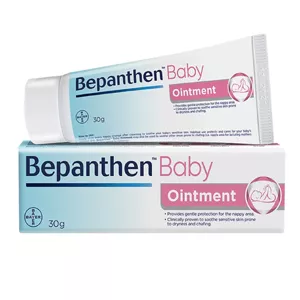
Bepanthen Baby Ointment is a gentle formula that calms, safeguards and nurtures a baby’s soft skin. It’s made with Provitamin B5 to help sensitive skin heal naturally. This ointment can also help with various skin troubles like diaper rash, eczema, and burns.
Pros:
- Brings quick comfort for diaper rash and other skin problems
- Works well for babies with tender skin
- It is cheaper than other creams
- The ointment’s germ-fighting powers are good for overall healing and as a regular moisturizer
- Feels smooth and silky on the skin
Cons:
- More oily compared to other baby creams
- Not as thicker as other creams
4. Boudreaux’s Butt Paste
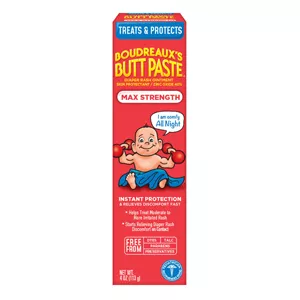
Boudreaux’s Butt Paste is a well-known cream for diaper rash that offers various types. It comes in different versions: Maximum Strength with 40% Zinc Oxide, Sensitive Skin with 16% Zinc Oxide, and with Natural Aloe with 16% Zinc Oxide.
Pros:
- Offers protection throughout the night and starts to soothe as soon as it touches the skin
- Safe for skin that’s easily irritated
- Simple to put on and wipe off
- No dyes, parabens, preservatives, or talc included
Cons:
- Thicker or sticky compare to other creams
- Some users don’t like the scent
5. Desitin Daily Defense Cream
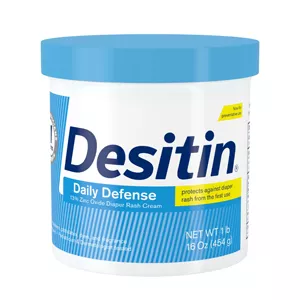
Best for Everyday Use
Desitin Daily Defense Cream is a diaper rash cream that quickly eases and shields a baby’s soft skin. It has 13% Zinc Oxide, a smooth formula that goes on easily and comes off without trouble. You can pick from two types: Daily Defense cream for light diaper rash and Max Strength for tough and serious diaper rash.
Pros:
- Brings fast comfort from diaper rash
- Forms a protective layer on the baby’s skin to quickly soothe and ease rash discomfort
- It glides on easily and comes off without hassle
Made for skin that’s easily bothered
Cons:
- Not as effective for severe diaper rashes
- Some users don’t like the way the cream feels.
6. Desitin Maximum Strength Diaper Rash Paste

Desitin Maximum Strength Diaper Rash Paste is a powerful and effective cream designed to treat and prevent diaper rash. It contains 40% zinc oxide to provide maximum strength relief and prevention of diaper rash discomfort. It is also hypoallergenic and pediatrician-tested.
Pros:
- Works on contact to provide rapid relief from diaper rash discomfort
- Creates a barrier to seal out wetness and protect the skin
- Thick and rich consistency for long-lasting protection
- Dermatologist-tested and safe for sensitive skin
- Provides overnight relief for baby’s tender skin
Cons:
- Some users find the paste too thick or difficult to spread
7. Drapolene Cream
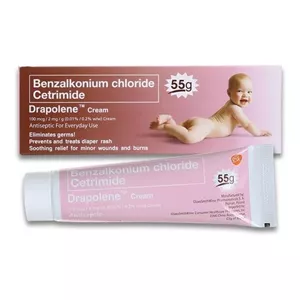
Best for Severe Rash
Drapolene Cream is a versatile product that’s great for preventing and treating nappy rash in babies and urinary dermatitis in grown-ups. It’s known for calming and effectively helping with nappy rash. Plus, it’s handy for relieving small burns, a bit of sunburn, and the effects of weather.
Pros:
- Keeps nappy rash away and heals it for babies.
- Brings comfort from urinary dermatitis in grown-ups.
- Helps soothe minor burns, a touch of sunburn, and weather effects.
- Works as a mild germ-fighting cream.
- Not greasy and simple to put on.
- Useful for minor burns and chafing.
Cons:
- Some people who are sensitive skin might have allergic reactions to the ingredients in Drapolene Cream.
- It’s not a good idea to put Drapolene Cream on a baby or adult who’s allergic to benzalkonium chloride, cetrimide, or lanolin.
- If you think someone might be having an allergic reaction, stop using the cream.
8. Human Nature Natural Nappy Cream
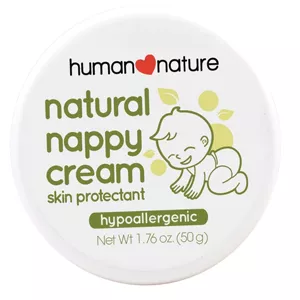
Human Nature Natural Nappy Cream is a completely natural product made to guard a baby’s tender skin against diaper rash and dampness.
Pros:
- Keeps a baby’s delicate skin safe from diaper rash and wetness
- Has zinc oxide, which makes a barrier against wetness that leads to diaper rash
- Soften the skin with coconut oil
- Takes care of and shields the skin with Vitamin E
- No added fragrance
Cons:
- Not working well for severe diaper rashes
9. Kleenfant Don’t Rash Diaper Rash Cream
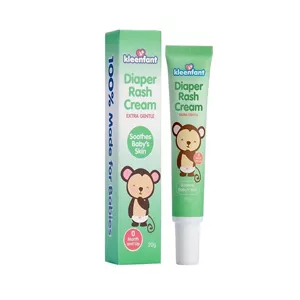
Kleenfant Don’t Rash Diaper Rash Cream is a product made to stop and heal diaper rash in babies. It’s got natural stuff like calendula extract, chamomile extract, and aloe vera extract to soothe and hydrate the skin.
Pros:
- Stops and heals diaper rash in babies
- Has zinc oxide, which guards against wetness causing diaper rash
- Soothes and hydrates the skin using natural things like calendula extract, chamomile extract, and aloe vera extract
- No harmful chemicals included
Cons:
- Not working well for severe diaper rashes.
10. Luca’s Papaw Ointment
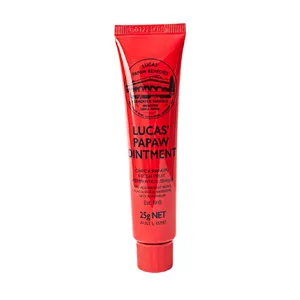
Lucas’ Papaw Ointment is a cream that’s used on the skin for different problems. It helps for a long time with problems like mosquito bites and stings from insects that aren’t poisonous.
Pros:
- Works for different skin problems
- Has fresh fermented papaya, which fights off bacteria and germs
- Takes away the itch and pain from stings
- Helps with small burns, cuts, insect bites, nappy rash, and other skin issues
Cons:
- Not working well for severe diaper rashes
11. Mama’s Choice Baby Diaper Cream
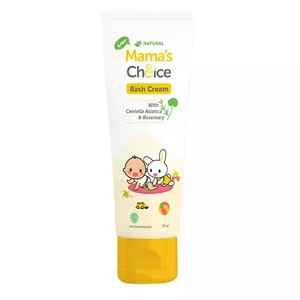
Mama’s Choice Baby Diaper Cream is a product made to stop and heal diaper rash in babies. The cream is full of natural stuff like zinc oxide, calendula extract, and chamomile extract to soothe and guard the skin.
Pros:
- Stops and heals diaper rash in babies
- No bad ingredients like parabens, sulfates, and phthalates inside
- Forms a barrier to stop wetness that leads to diaper rash
- Keeps the skin soft and well-fed
Cons:
- Not working well for severe rashes
- Need to apply frequently
12. Mustela Vitamin Barrier Cream 123
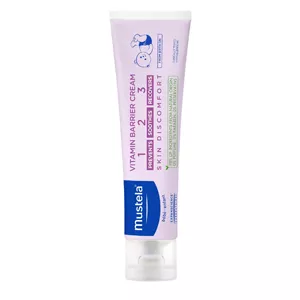
Mustela Vitamin Barrier Cream 123 is a diaper cream made to stop and fix diaper rash. This cream has a mix of special natural stuff to give three kinds of help: stopping irritation and redness, making discomfort feel better, and fixing the skin. It’s been checked by doctors and is okay for use from the start.
Pros:
- Stops and fixes diaper rash.
- Does three things: stops problems, makes the pain feel better, and fixes skin
- Okay to use right from when a baby is born
- No smells, parabens, phthalates, or preservatives
- Has natural ingredients
Cons:
- Not working well for severe rashes
- Need to apply frequently
13. Rashfree Ointment
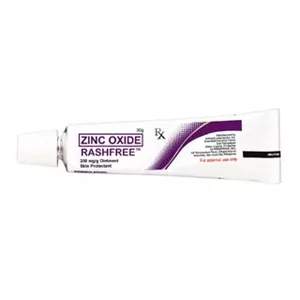
Rashfree Ointment is a cream made for stopping and fixing diaper rash. It’s often used to keep diaper rash away and help it get better. It’s also good for taking care of skin that’s rough and giving relief from little skin problems.
Pros:
- Keeps diaper rash away and helps it get better
- Has zinc oxide, which makes a wall on the skin
- Makes little skin problems feel better
- Helps rough skin get better
- Can use every diaper change
Cons:
- Not working well for severe diaper rashes
- Need to apply frequently
14. Sudocrem Nappy Rash Cream
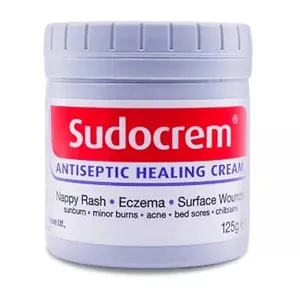
Sudocrem Nappy Rash Cream is a well-known product used to stop and heal diaper rash. This cream has zinc oxide, which makes a wall on the skin and helps fix diaper rash.
Pros:
- Stops and heals diaper rash.
- Has zinc oxide, which makes a wall on the skin.
- Can use for other skin problems like eczema, sunburn, pimples, and small burns
- Makes the skin feel better and helps it heal
- No added fragrance
Cons:
- Not working well for severe rashes
- Need to apply frequently
15. Tiny Buds In a Rash Natural Nappy Cream

Shopee's Top Choice
Tiny Buds In a Rash Natural Nappy Cream is a natural cream that you can put on to help with diaper rashes, allergies, and skin problems.
Pros:
- Has extracts from Australian berries that make a baby’s nappy area feel calm and comfy
- No stuff from petroleum, parabens, or fake smells inside
- Feels light and not sticky
- Can use every diaper change
Cons:
- Not working well for severe rashes
- Need to apply frequently
How to Prevent Diaper Rash: Best Practices
Diaper rash is a common concern for parents of infants and young children. It occurs when the delicate skin in the diaper area becomes irritated, red, and inflamed. While it’s a frequent occurrence, there are many things you can do to stop diaper rash from happening and keep your baby comfy. Let’s go through the best ways to prevent diaper rash and make sure your baby’s skin stays healthy.
1. Choose the Right Baby Diapers
Choosing the right diapers is crucial in preventing diaper rash. Go for diapers that let the skin breathe, soak up wetness, and fit your baby well. Don’t use diapers that are too tight, as they can rub and trap moisture.
2. Change Diapers Frequently
Frequent diaper changes are key to preventing diaper rash. Leaving a wet or dirty diaper on for too long can make the skin irritated. Change your baby’s diaper every two to three hours, or right after they’ve soiled it.
3. Be Gentle When Cleansing
When you clean your baby during diaper changes, use a mild, scent-free cleanser or just water. Avoid harsh soaps and wipes with alcohol or strong fragrances. Those can take away the skin’s natural oils and make it irritated.
4. Pat Dry, Don’t Rub
After cleaning, gently pat your baby’s skin dry with a soft towel. Don’t rub too hard – that can make the irritation worse. Make sure the diaper area is completely dry before putting on a new diaper.
5. Give Diaper-Free Time
Giving your baby some diaper-free time can help their skin breathe and reduce the risk of diaper rash. Lay them on a soft, waterproof surface and let them kick and play without a diaper for short periods.
6. Use Barrier Creams and Ointments
Applying a thin layer of barrier cream or ointment can help protect your baby’s skin from moisture and friction. Look for products containing zinc oxide or petroleum jelly, which create a protective barrier.
7. Think About What They Eat
For babies who are on solids, their diet can make a difference in preventing diaper rash. Certain acidic foods, like citrus fruits and tomatoes, can increase the acidity of urine, potentially leading to irritation. Watch what they eat and make changes if needed.
8. Stay Mindful of Allergies
Be careful about allergies your baby might have. Some diapers, wipes, or laundry detergents may contain ingredients that could trigger skin reactions. Choose hypoallergenic products that are made for sensitive skin whenever you can.
9. Dress Them in Comfy Clothes
Dress your baby in loose-fitting, breathable clothing to allow air circulation and reduce friction. Clothes that are too tight can keep moisture in and make diaper rash worse.
10. Be Cautious with Wipes
Not all baby wipes are the same. Choose ones that are made for sensitive skin and don’t have strong chemicals. Or you can use a soft cloth and water to clean.
11. Consider Cloth Diapers
Cloth diapers, while requiring more frequent changes, can be gentler on a baby’s skin as they’re usually made from natural, breathable materials. Just be sure to clean and dry them well to keep away bacteria.
Buying Guide: How to Choose the Best Diaper Rash Cream
1. Key Factors to Consider
When you’re looking for a diaper rash cream, think about these things: how bad the rash is, how sensitive your baby’s skin is, and if your baby has any allergies. These will help you find a cream that’s just right for your baby.
2. Check the Ingredients
Look closely at what’s in the cream. Go for creams with zinc oxide or petrolatum – these make a shield against wetness. Stay away from creams with tough chemicals like parabens, phthalates, and fake smells because they can make the rash worse.
3. Cream or Ointment: What’s Best?
Both creams and ointments do the job, but they feel different. Creams are easy to put on and spread, while ointments are thicker. Pick what you and your baby like.
4. Perform a Patch Test
Your baby’s skin might react differently to different creams. Perform a patch test on a small area before applying it to the affected area. This step can prevent any unexpected allergic reactions.
5. Application Techniques
Putting on diaper rash cream might seem easy, but there are techniques to make it work better. Gently clean the skin before you put it on, and make sure it’s all dry. Use a little for normal use and more for bad rashes.
6. Fragrance-Free or Not?
While a pleasant scent might be appealing, fragrances can sometimes irritate sensitive skin. Fragrance-free options are usually safer, but if you’re tempted by scented creams, ensure they’re derived from natural ingredients.
7. Homemade Remedies
If you’re a fan of all things natural, you can make your own diaper rash cream at home using things like coconut oil, shea butter, and aloe vera. Remember to do a small patch test before widespread use.
8. See What Other Parents Say
Before you decide on a diaper rash cream, read what other parents say about it. Their experiences can tell you if the cream works well and if it’s worth trying.
9. Price vs. Quality
Expensive doesn’t always mean better. There are great diaper rash creams that don’t cost a lot. Focus on the ingredient list and reputation rather than solely on the price tag.
10. Longevity and Storage Tips
Diaper rash creams have a shelf life. Check the expiry date before purchasing. Also, keep the cream in a cool, dry place, away from sunlight, so it works well.
11. Ask Your Pediatrician
When in doubt, don’t hesitate to consult your pediatrician. They can provide personalized recommendations based on your baby’s skin condition and medical history.
Home Remedies for Diaper Rash
1. Keep the Area Clean and Dry
The first step in treating diaper rash is to keep the affected area clean and dry. Use gentle baby soap and water during diaper changes. Gently pat with a soft towel to dry and avoid rubbing.
2. Choose the Right Diapers
Opt for diapers that are breathable and provide good air circulation. Avoid diapers with excessive plastic lining, as they can trap moisture and worsen the rash.
3. Gentle Cleansing Techniques
When wiping your baby during diaper changes, use a soft cloth or a gentle baby wipe. Harsh wiping can further irritate the skin.
4. Let the Skin Breathe
Frequent diaper-free time can do wonders for healing diaper rash. Allow your baby’s skin to breathe by giving them some diaper-free playtime.
5. Coconut Oil Comfort
Coconut oil possesses natural antimicrobial properties and can soothe inflamed skin. Apply a thin layer of coconut oil to the affected area for relief.
6. Try Oatmeal Baths
Oatmeal baths can provide a calming effect on irritated skin. Grind oatmeal into a fine powder and sprinkle it into lukewarm bathwater.
7. Use Petroleum Jelly
Applying a thin layer of petroleum jelly creates a protective barrier between the baby’s skin and moisture.
8. Use Breast Milk
Breast milk isn’t just for feeding. Applying a few drops on the rash can help soothe and speed up the healing process.
Related: Best Breast Pumps in the Philippines
9. Chamomile Compress
Chamomile has anti-inflammatory properties. Brew chamomile tea, let it cool, and use it as a compress on the affected area.
10. Baking Soda Bath
Adding a teaspoon of baking soda to your baby’s bathwater can help neutralize acidity and promote healing.
11. Apple Cider Vinegar Rinse
Dilute apple cider vinegar with water and use it to gently cleanse the diaper area. Its antibacterial properties can aid in healing.
12. Plain Yogurt Comfort
Plain, unsweetened yogurt contains probiotics that can restore the skin’s natural balance.
13. Calendula Cream Care
Calendula cream can provide relief from inflammation and promote skin repair. Apply it to the affected area after a diaper change.
14. Use Cornstarch
Cornstarch can help absorb excess moisture. Lightly dust some cornstarch on the rash-prone areas.
15. Drink Water
Ensure your baby stays well-hydrated. Proper hydration can help maintain healthy skin and aid in recovery.
Diaper Rash Creams vs. Ointments: Which Is Best for Your Baby?
Diaper Rash Creams: What You Need to Know
Diaper rash creams are emollient-based products formulated to create a protective barrier between the baby’s skin and the wetness of the diaper. These creams often contain zinc oxide or petroleum jelly, which soothe the skin and help it heal.
Benefits of Diaper Rash Creams
- Barrier Protection: Diaper rash creams create a physical barrier shielding skin from moisture and friction.
- Soothing Relief: These creams provide immediate relief by soothing inflamed skin and reducing redness.
- Healing Properties: Many creams contain ingredients that aid in the healing process, promoting faster recovery.
Types of Diaper Rash Ointments
Diaper rash ointments, on the other hand, are typically oil-based and offer a higher level of moisture protection. They contain ingredients like lanolin or mineral oil that create a thicker barrier on the skin.
Advantages of Diaper Rash Ointments
- Intense Moisture Lock: Ointments are excellent at sealing in moisture, making them a great choice for babies with extremely sensitive or dry skin.
- Extended Protection: The thicker consistency of ointments ensures longer-lasting protection, making them ideal for overnight use.
Key Differences Between Creams and Ointments
The big difference is how thick they are and how much wetness they keep away. Creams are lighter and spread easier. Ointments are thicker and work longer to protect the skin.
How to Apply Diaper Rash Cream: Step-by-Step Guide
Step 1: Wash Your Hands
Always start by washing your hands well. This keeps your baby’s sensitive skin safe from germs.
Step 2: Open the Diaper and Examine the Rash
Carefully open the diaper and assess the severity of the rash. If you notice any open sores or signs of infection, consult your pediatrician.
Step 3: Apply a Thin Layer of Cream
Take a small amount of diaper rash cream and apply it gently to the affected area. Spread it thinly, covering the red or irritated parts of the skin.
Step 4: Close the Diaper
After applying the cream, reattach the diaper. Make sure it’s not too tight to allow the skin to breathe.
Step 5: Wash Your Hands Again
Once you’ve successfully applied the cream and reattached the diaper, wash your hands again to prevent cross-contamination.
Dos and Don’ts
- Do: Keep the diaper area clean and dry, use a diaper cream during each change, and use breathable diapers.
- Don’t: Use excessive amounts of cream, apply the cream too thickly, or use products with harsh chemicals.
Personal Insights and Recommendations
From personal experience, dealing with diaper rash can be a real challenge for new parents. The key is prevention! Consistently changing diapers and allowing your baby’s bottom to breathe can make a world of difference. In case a rash does emerge, choose a mild, fragrance-free diaper rash cream. It’s essential to remember that less is more – apply a thin layer. If the rash persists, don’t hesitate to seek advice from your pediatrician. Ultimately, the paramount goal is to ensure your little one’s comfort and happiness.
Frequently Asked Questions About Diaper Rash and Creams
How common is diaper rash?
Diaper rash is quite common among babies and young children, and it can happen to most infants at some point. The sensitive skin in the diaper area is prone to irritation, especially when exposed to wetness and friction.
When should I worry about diaper rash?
While diaper rash is generally a common occurrence, there are cases where you might need to be concerned. If the rash doesn’t show improvement after a few days of using preventive measures and appropriate creams, talk to a doctor.
Can I use diaper rash cream preventively?
Yes, you can use diaper rash cream preventively. Applying a thin layer of cream during each diaper change can act as a barrier between your baby’s delicate skin and the moisture in the diaper. This preventive approach can help reduce the likelihood of rash development.
Are natural diaper rash creams as effective as conventional ones?
Natural diaper rash creams often contain ingredients like plant-based oils, shea butter, and aloe vera, which can have soothing and protective properties. These ingredients can be as effective as the components in conventional diaper rash creams. However, the effectiveness of any cream may vary based on your baby’s skin and the severity of the rash.
Can I use cloth-friendly diaper rash creams for disposable diapers?
Yes, most cloth-friendly creams are safe for use with disposable diapers.
Should I stop using cream if the rash gets worse?
If you notice that the rash is getting worse or not improving despite using cream, it’s advisable to consult a healthcare professional. A worsening rash could indicate an infection or a more serious issue that requires medical attention.
Can cloth diapers reduce the risk of diaper rash?
Cloth diapers are often praised for their breathability, which can help reduce the risk of diaper rash. The natural fibers in cloth diapers allow air circulation, minimizing the trapping of moisture against the skin. However, proper hygiene practices are still essential to prevent any diaper-related skin issues.
Should I avoid using wipes altogether?
You can use wipes, but it’s important to choose baby wipes that are specifically formulated for sensitive skin. Harsh or scented wipes might exacerbate the rash or cause additional irritation. Alternatively, you can use plain water and a soft cloth for cleaning during diaper changes.
Are there any specific foods that can trigger diaper rash in breastfed babies?
Breastfeeding moms might notice that certain foods they eat can impact their baby’s skin. Foods like citrus fruits or spicy dishes might lead to diaper rash in some breastfed babies. If you suspect a connection between your diet and your baby’s rash, consider adjusting your diet and monitoring the results.
Can I use over-the-counter antifungal creams for diaper rash treatment?
Over-the-counter diaper rash creams can be effective in treating mild cases of diaper rash. However, it’s a good practice to consult a healthcare professional, especially if the rash seems severe or isn’t improving with standard treatments. A doctor can provide guidance on the best course of action for your baby’s specific condition.
How often should I change my baby’s diaper to prevent diaper rash?
Frequent diaper changes are key to preventing diaper rash. Change your baby’s diaper every 2 to 3 hours, or as soon as it’s wet or soiled. This helps keep the diaper area dry and reduces the chances of irritation.
Is diaper rash a sign of bad parenting?
Diaper rash is not a reflection of parenting skills or neglect. It’s a common occurrence that can happen despite your best efforts to keep your baby clean and comfortable. Babies have sensitive skin, and diaper rash can result from a variety of factors, including wetness, friction, and even the baby’s individual skin sensitivity.
Can I use any regular baby lotion as a diaper rash cream?
It’s recommended to use a diaper rash cream specifically formulated for this purpose. Regular baby lotions might not have the necessary ingredients to provide a protective barrier or soothing properties. Diaper rash creams are designed to address the unique needs of the diaper area.
How often should I apply diaper rash cream?
Apply a thin layer of diaper rash cream during every diaper change, especially if your baby has a rash. Even when there’s no rash, using a little cream can act as a preventive measure. The goal is to create a barrier that protects the skin from moisture and friction.
Can diaper rash indicate a more serious condition?
In most cases, diaper rash is not serious and can be treated with proper care and hygiene. However, if the rash persists, becomes increasingly severe, or shows signs of infection (such as pus or open sores), it’s important to consult a healthcare professional for appropriate evaluation and treatment.
Is it necessary to stop using the cream once the rash is gone?
Once the rash has cleared up, you can gradually reduce the frequency of applying diaper rash cream. However, it’s still a good idea to continue using a thin layer of cream during diaper changes to prevent future rashes and maintain the skin’s health.
How long does it take for diaper rash to heal?
The healing time for diaper rash varies depending on the severity of the rash and the effectiveness of the treatment. Mild rashes might improve within a day or two of proper care, while more severe cases could take several days or even longer.
How can I prevent diaper rash from coming back?
To prevent diaper rash from recurring, ensure you change your baby’s diaper promptly whenever it’s wet or soiled. Use breathable diapers that allow air circulation, and give your
Conclusion
Choosing the right diaper rash cream is essential to ensure your baby’s comfort and overall well-being. With the best options available in the Philippines, you can confidently address diaper rash and prevent its recurrence. When deciding, keep your baby’s individual requirements and sensitivities in mind, so you can make a confident and informed choice.
Our Top Picks
When to Seek Medical Advice
In most cases, diaper rash can be effectively managed with preventive measures. However, if the rash persists, becomes severe, or is accompanied by other symptoms like fever, consult your pediatrician for proper diagnosis and treatment.
Written By
With a solid foundation in family dynamics, child development, and a knack for assessing products, our content is built on a strong grasp of our topics. We use trustworthy sources, seek advice from experts, and stay current with the latest happenings in our fields. We always give credit to our sources, reveal any possible conflicts of interest, and deliver info in a truthful and unbiased way. Follow us on Facebook or join our Facebook Group.
Start your journey to confident parenting
Join over 2,000+ parents who receive free practical advice and tips from Joyful PH. Unsubscribe anytime.
You may also like
11 Best Baby High Chairs in the Philippines
In the Philippines, where family meals are a cherished tradition, finding the…
11 Best Nursing Pillows in the Philippines
When it comes to nursing pillows, finding the perfect one can make a world of…
13 Best Baby Bouncers in the Philippines
The journey of baby bouncers in the Philippines is a fascinating evolution that…
13 Best Baby Toothbrushes in the Philippines
Getting the right toothbrush for your baby is essential for their oral health.…
11 Best Baby Monitors in the Philippines
Baby monitors have become a crucial tool for parents in the Philippines,…
13 Best Baby Carriers in the Philippines
Choosing the best baby carrier is essential for new parents who want to keep…


